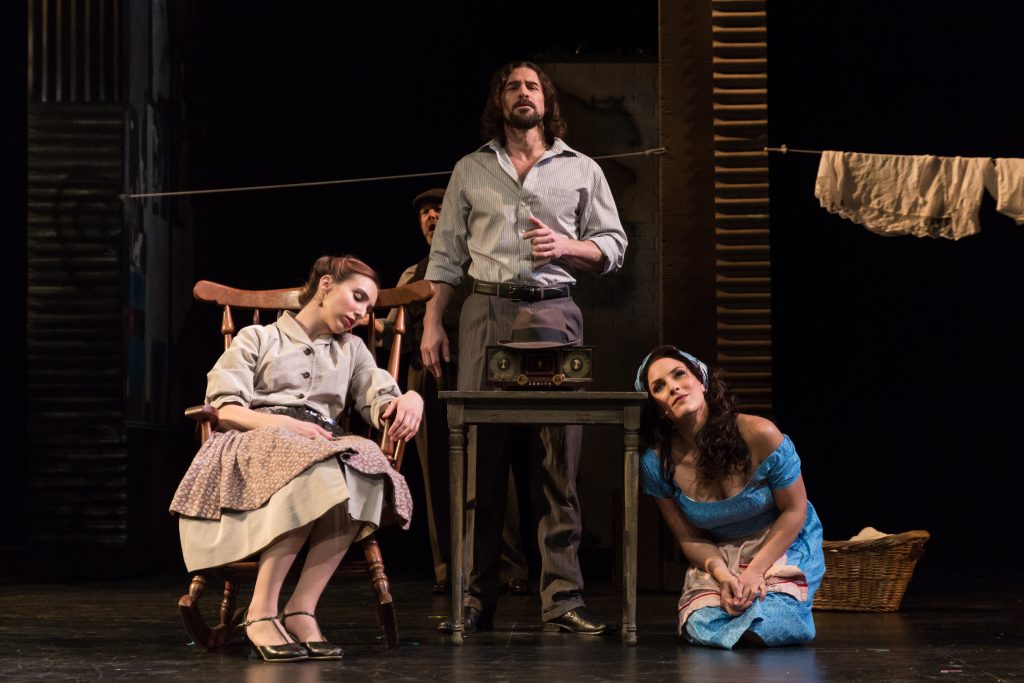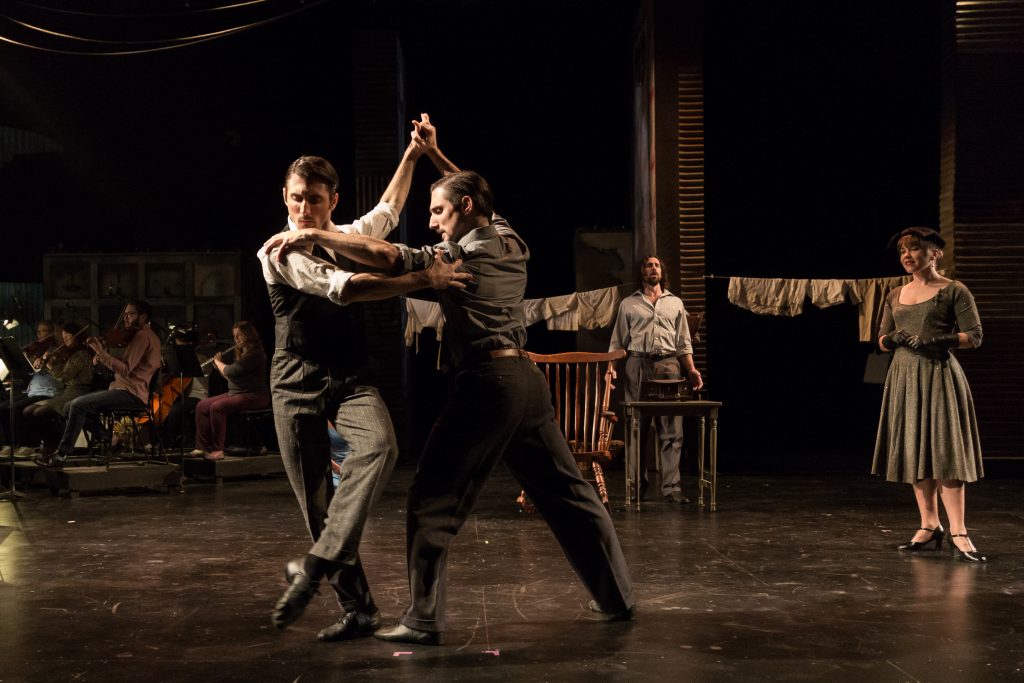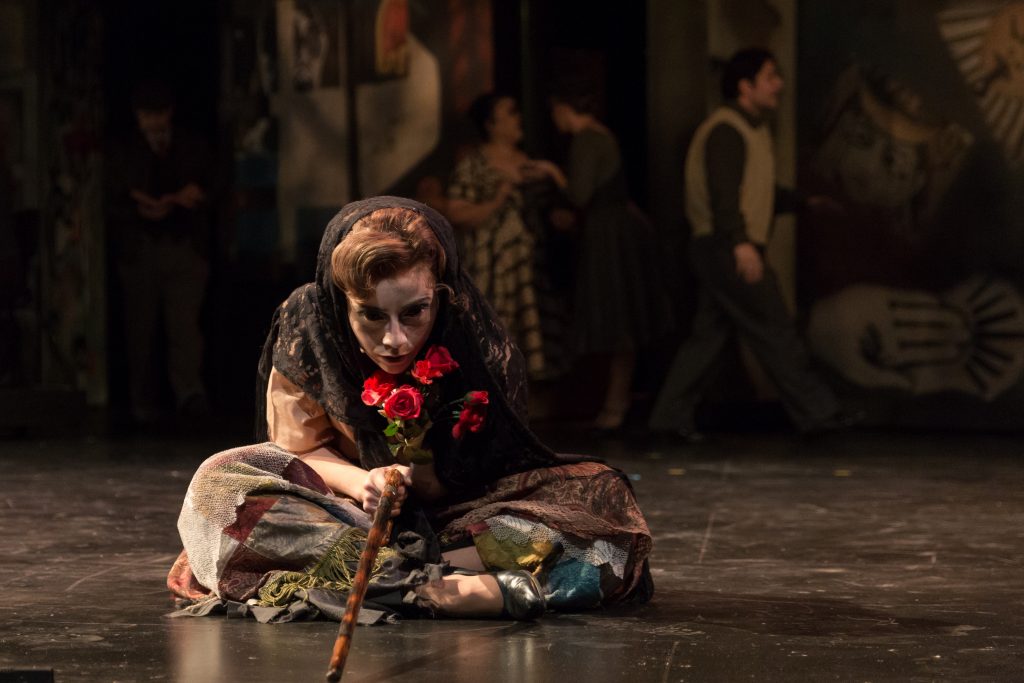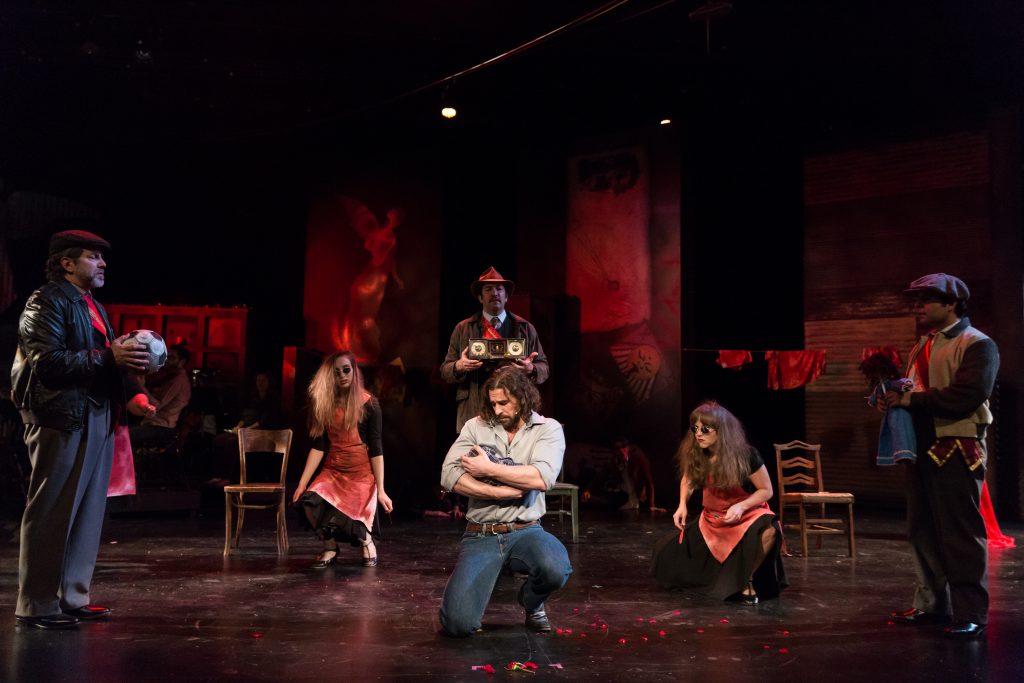Piazzolla’s Tango Opera: A Smoldering Surrealist Portrait
Who is María of Buenos Aires, anyway? Is she another Eva Maria Duarte from the Argentine hinterlands attempting to make her mark on Buenos Aires? Is she just another streetwalker with the proverbial heart of gold? Or is she yet another apparition of the Blessed Virgin Mary?
Members of the San Diego Opera audience may have left Friday’s (January 26) opening night performance of Ástor Piazzolla’s tango opera María de Buenos Aires in a quandary over the identity of the work’s protagonist, but there was no doubt about the depth and allure of Piazzolla’s music. The seductive lilt of even the most quotidian tango is hard to resist, but Piazzolla is never content with facile success.From the orchestral prelude’s pulsing opening themes, the composer seduced his audience. In addition to the abundance of rich melodic invention, his score offered a tango chaconne, a tango fugue on a subject whose complexity even J. S. Bach never approached, and a tango sonata form, although I confess that I was sufficiently distracted by the disciplined, sleek choreography of tango dancing brothers Laurence and Lester Gonzalez, that I lost my concentration, and I am not certain if the two opening sonata form themes actually returned in the home key during the recapitulation.
Librettist Horacio Ferrer opens his story with several scenes that establish María’s tedious provincial life, but soon she produces that iconic suitcase (but does not launch into “Another Suitcase in Another Hall”) that signals farewell to her “sad existence.” As María, Audrey Babcock used her dark-hued mezzo-soprano to establish her character’s earnest yearnings, especially in her big aria “Jo soy Maria.” Matching her timbre with even duskier shades, baritone Paul La Rosa established El Payador as María’s sometime lover and occasional protector, although unlike the monochromatic Babcock, La Rosa drew on a variety of vocal colors that paralleled and supported the opera’s contrasting episodic dramatic situations. As El Duende, a speaking and dancing character that serves as the opera’s narrator—commentator—muse, Celeste Lanuza cavorted, danced, and executed diverting comedic spoofs that realized many of Ferrer’s surrealist intentions. From colorful circus clown to bowler-hatted Charlie Chaplin to an inebriated priest celebrating mass in full liturgical garb, Lanuza suffused several solo scenes with electric expectation, ample wit, and a deft touch with physical comedy.Director and choreographer John de los Santos deserves immense credit for shaping this chimerical opera, keeping the diffused actions of the secondary characters—which Ferrer simply calls the Ensemble—cleanly focused and employing dance as a kind of connective tissue that happens spontaneously rather than as a flashy set piece that stops the dramatic action. The downside of Ferrer’s poetic surrealism is a compromised sense of dramatic progression, and de los Santos’ direction and dance design have compensated for this factor without losing Ferrer’s surrealist edge.
Tenor Rodolfo Ruiz-Velasco, baritone Bernardo Bermudez, and bass Walter DuMelle incarnated numerous laborers, mafiosi, drinkers and prelates with confidence and on occasion spouted well-produced vocal announcements. Soprano Sarabeth Belon and mezzo-sopranos Sandra Camarena and Laura Bueno portrayed mothers, aristocrats, and molls with finesse equal to that of the Ensemble’s male members.
Conducting from the grand piano, Bruce Stasyna drew polished and rhythmically well-defined performances from his 11-piece onstage orchestra. Kudos to crystalline vocal solo accompaniments from Stasyna and from guitarist Fred Benedetti, as well as sparkling percussion themes from Jon Szanto and Benjamin Irons. Without the vibrant bandoneon colors from David Alsina, an authentic Argentine tango sonority simply could not materialize; Alsina was both elegant and indispensable. San Diego Symphony strings, led by First Violin Wesley Precourt, provided laudable warmth and stylish support throughout the opera.To propel the opera’s fluid dramaturgy, Scenic Designer Liliana Duque Piñeiro wisely used the Lyceum Theatre’s large open stage, adding just a few tall partitions that could be easily turned to subtly reconfigure the space. Ingrid Helton’s vaguely period costumes, long dresses for the women and hats for the men, suggested more remote times and the patriarchal culture of South America. Her sensitivity to period clerical garb proved acute: Walter DuMelle wore his black biretta with particular authority, and Celeste Lanuza’s vibrantly hued chasuble was riveting.
San Diego Opera presented “María de Buenos Aires” as part of its Dētour Opera Series at the Lyceum Stage Theatre in San Diego’s Horton Plaza on January 26, 2018. Additional performances are scheduled for January 27 & 28, 2018, in the same venue.

Ken Herman, a classically trained pianist and organist, has covered music for the San Diego Union, the Los Angeles Times’ San Diego Edition, and for sandiego.com. He has won numerous awards, including first place for Live Performance and Opera Reviews in the 2017, the 2018, and the 2019 Excellence in Journalism Awards competition held by the San Diego Press Club. A Chicago native, he came to San Diego to pursue a graduate degree and stayed.Read more…





And built right here at the San Diego Opera scenic studios.